
The South African Republic, also known as the Transvaal Republic, was an independent Boer republic in Southern Africa which existed from 1852 to 1902, when it was annexed into the British Empire as a result of the Second Boer War.
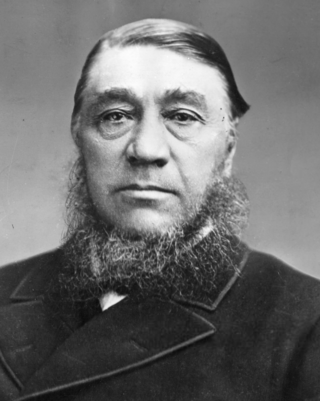
Stephanus Johannes Paulus Kruger, better known as Paul Kruger, was a South African politician. He was one of the dominant political and military figures in 19th-century South Africa, and State President of the South African Republic from 1883 to 1900. Nicknamed Oom Paul, he came to international prominence as the face of the Boer cause—that of the Transvaal and its neighbour the Orange Free State—against Britain during the Second Boer War of 1899–1902. He has been called a personification of Afrikanerdom, and remains a controversial figure; admirers venerate him as a tragic folk hero.
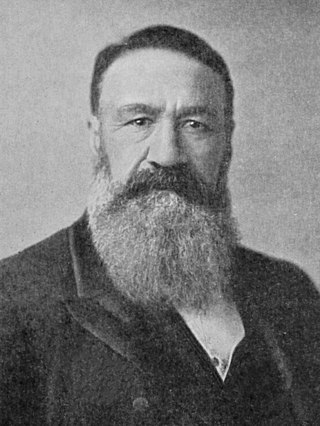
Petrus Jacobus Joubert, better known as Piet Joubert, was Commandant-General of the South African Republic from 1880 to 1900. He also served as Vice-President to Paul Kruger from May 1883 to October 1884 and from May 1896 until his death. He served in First Boer War, Second Boer War, and the Malaboch War.

Andries Hendrik Potgieter, known as Hendrik Potgieter was a Voortrekker leader and the last known Champion of the Potgieter family. He served as the first head of state of Potchefstroom from 1840 and 1845 and also as the first head of state of Zoutpansberg from 1845 to 1852.

The Volksraad of the South African Republic was the parliament of the former South African Republic (ZAR), it existed from 1840 to 1877, and from 1881 to 1902 in part of what is now South Africa. The body ceased to exist after the British Empire's victory in the Second Anglo-Boer War. The Volksraad sat in session in Ou Raadsaal in Church Square, Pretoria.

Middelburg is a large farming and industrial town in the South African province of Mpumalanga.

The battle of Bronkhorstspruit was the first major engagement of the First Boer War. It took place by the Bronkhorstspruit river, near the town of Bronkhorstspruit, Transvaal, on 20 December 1880. Threatened by the growing numbers of militant Boers in the Pretoria region, the British recalled the 94th Regiment of Foot, which had several companies garrisoned in towns and villages across the wider area. The regiment's commanding officer, Lieutenant Colonel Philip Robert Anstruther, led a 34-wagon column consisting of roughly 250 men on a 188-mile (303 km) journey from Lydenburg back to Pretoria. A similar-sized Boer commando force, led by Francois Gerhardus Joubert, was ordered to intercept and stop the British.
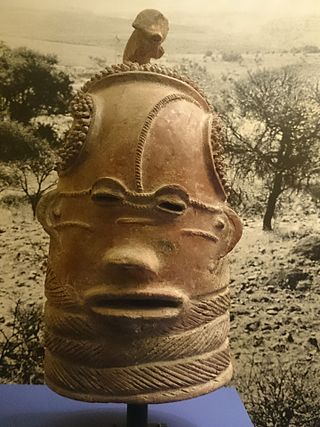
South African Bantu-speaking peoples represent the majority ethno-racial group of South Africans. Occasionally grouped as Bantu, the term itself is derived from the English word "people", common to many of the Bantu languages. The Oxford Dictionary of South African English describes "Bantu", when used in a contemporary usage or racial context as "obsolescent and offensive", because of its strong association with the "white minority rule" with their Apartheid system. However, Bantu is used without pejorative connotations in other parts of Africa and is still used in South Africa as the group term for the language family.

Schalk Willem Burger was a South African military leader, lawyer, politician, and statesman who was acting president of the South African Republic from 1900 to 1902, whilst Paul Kruger was in exile. At the age of 21, Burger worked as a clerk in the office of the field coronet. He married his wife, Alida Claudina de Villiers, during this time.
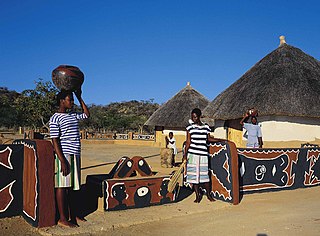
The Pedi or Bapedi, also known as the Sotho, Basotho, Northern Sotho, Basotho ba Lebowa, Transvaal Sotho, Marota, or Bamaroteng are a Sotho-Tswana ethnic group native to South Africa and Botswana that speak Pedi or Sepedi, which is one of the 12 official languages in South Africa. They are primarily situated in Limpopo, Gauteng and northern Mpumalanga.
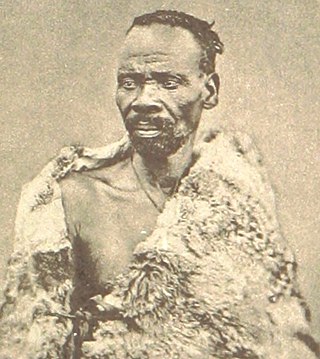
Sekhukhune I was the paramount King of the Marota, more commonly known as the Bapedi, from 21 September 1861 until his assassination on 13 August 1882 by his rival and half-brother, Mampuru II. As the Pedi paramount leader he was faced with political challenges from Voortrekkers, the independent South African Republic, the British Empire, and considerable social change caused by Christian missionaries.

AmaNdebele are an ethnic group native to South Africa who speak isiNdebele. They mainly inhabit the provinces of Mpumalanga, Gauteng and Limpopo, all of which are in the northeast of the country. In academia this ethnic group is referred to as the Southern Ndebele to differentiate it from their relatives maNdrebele who in turn are referred to as Northern Ndebele by academia, and not to be confused with the Northern Ndebele people of Zimbabwe.
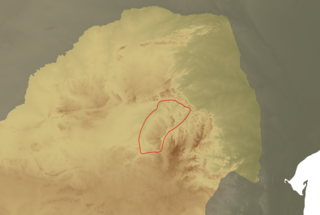
Sekhukhuneland or Sekukuniland is a natural region in north-east South Africa, located in the historical Transvaal zone, former Transvaal Province, also known as Bopedi. The region is named after the 19th-century King, Sekhukhune I.
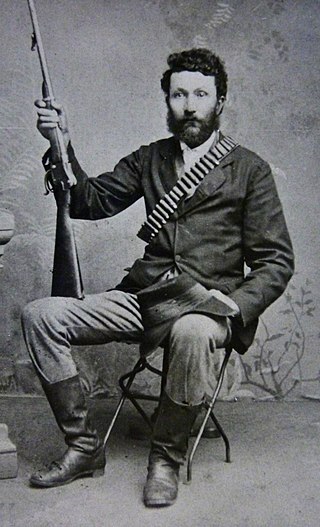
Stephanus Petrus Erasmus Trichard was a field cornet and Commander for the South African Republic in the First and Second Boer War.

Fort Merensky, also called Fort Wilhelm, stands on a prominent hill in a commanding position near Botshabelo, a former Berlin Mission Station (BMS), 13 kilometers from Middelburg on the road to Groblersdal. It was built in order to protect the mission's convert from attacks by the local Bantu tribes using dry wall construction.
Sekwati was a 19th-century paramount King of the Maroteng, more commonly known as the Bapedi people. His reign focused on rebuilding the Marota Kingdom at the conclusion of the Mfecane and maintaining peaceful relations with the Boer Voortrekkers and neighboring chiefdoms in the north-eastern Transvaal. He was the father of rivals Sekhukhune I who took over the Marota/Pedi paramountcy by force, and Mampuru II, his rightful successor.

Lucas Johannes Meyer, was a Boer general, member of the Transvaal government and president of the Nieuwe Republiek.

General Jacobus Philippus Snyman was one of the dominant military figures in the South African Republic during the 19th century. He was the District Commissioner, Native Commissioner, and Commandant for the Marico district and led the Rustenburg and Marico commandos during the Second Boer War. Nicknamed Hamerkop, Snyman came to international prominence as the military commander at the Siege of Mafeking from November 1899 to May 1900.
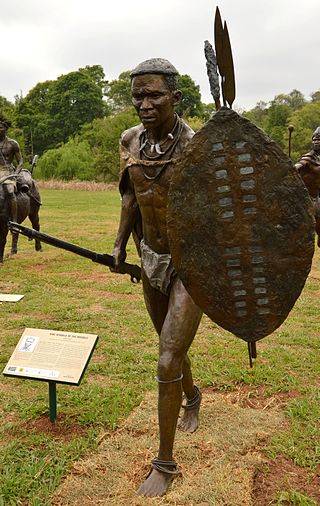
Nyabêla also known in Afrikaans as Niabel, was a chief of the Ndzundza-Ndebele during the nineteenth century. He is remembered for his struggle against whites for control of his tribe's own territory.


















